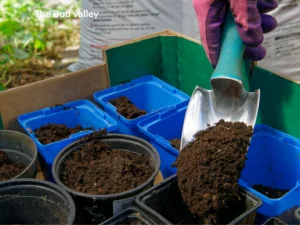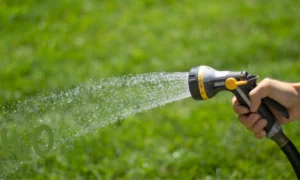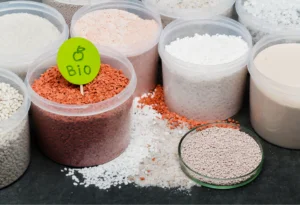
English ivy (Hedera helix) is an evergreen perennial. This plant can reach a maximum height of 80 feet, and the best time to plant it is in spring when it can grow very nicely. Another important thing to remember is that this plant is poisonous to humans and animals, so always keep small children and pets away from it. I am writing this blog now, about eight to nine years after planting this tree in my house to enhance the beauty of my gate. Due to my long-term care and experience living with this tree, I will present all the detailed information about it today so that you can learn everything you need to be knowledgeable in planting and maintaining it.
Common Name |
English ivy, common ivy, European ivy |
Botanical Name |
Heder helis |
Family |
Araliaceae |
Plant Type |
Perennial, evergreen climbing vine |
Mature Size |
N/A climbs and spreads as possible |
Sun |
Part shade to full shade |
Soil Type |
Fertile and moist |
Flower Color |
Greenish-white, greenish-yellow |
Bloom Time |
Fall |
Hardiness |
4-13 ( USDA) |
Native Area |
Europe, Scandinavia, Russia |
Toxicity |
Toxic to people and |
English Ivy Care

English ivy plants spread very quickly. They play an effective role in preventing soil erosion on hillsides by covering large areas, and reducing the impact of direct rainwater on the soil. They thrive in areas where the vines can provide shade and protection from the sun. Therefore, important aspects of caring for this plant include sunlight exposure, watering, pruning, and other essential factors.
Light

When planting and caring for English Ivy indoors, it’s crucial to avoid exposing the plant to direct sunlight. Direct sunlight can cause the leaves of the plant to burn, so it should always be kept in indirect sunlight.
Soil

This plant thrives in well-drained soil, and ash soil works best for it because the soil contains all the necessary food and nutrients in sufficient quantity.
Water

The most crucial aspect to consider when watering is that overwatering is detrimental to this plant. Therefore, before watering, you must check the soil around the plant to ensure it is slightly dry, about an inch deep. Providing clean water through proper drainage systems helps prevent root rot and ensures the longevity of the plant.
Temperatures

English ivy plants cannot tolerate excessive temperatures. The ideal temperature range for this plant is 70 to 90 degrees Fahrenheit. Within this range, the plant thrives and experiences normal growth. However, it is not resilient to winter winds or summer highs.
Fertilizing

Fertilizing is crucial for plant health. If there is ever a shortage of nutrients or essential elements, the plant must be fertilized in the spring using a 20-20-20 fertilizer (or a 2-2-2 organic formula). Feed English ivy every two weeks during the summer season. I have been fertilizing my plants this way for over eight years, and they are growing properly and thriving. I highly recommend this fertilization regimen.
Pruning

Pruning is highly beneficial for plants, especially for removing dead or diseased leaves affected by fungus or damage. Using sharp scissors, trim these leaves to improve the plant’s health. Additionally, you can selectively remove leaves to achieve a desired aesthetic, but be cautious not to over-prune the tree.
Common Pests & Plant Diseases

Pests & Plant Diseases: English Ivy, a beautiful and versatile plant, can add a touch of sophistication to any space. Nonetheless, it is vulnerable to illnesses and pests just like any other plant. This blog post will go over a few of the typical pests and illnesses that affect English ivy and provide advice on how to treat and avoid them.
Pests Aphids:
These tiny insects destroy your English ivy by eating the leaves; they feed on plant sap and multiply quickly. On the underside of leaves, look for groups of these pests.
Spider Mites:
Spider mites are frequently prevalent in dry weather and produce fine webbing on your ivy. They suck the life out of your ivy leaves, causing them to fade and wilt.
Mealy bugs :
These white, cottony insects are capable of infesting English Ivy, stunting growth, and causing leaves to turn yellow. They are primarily located in groups on the branches and leaves of the plant.
Pro Tip:
Keep a watch on your English Ivy for signs of bugs, and stress the plant out as little as possible to reduce the likelihood of infestation.
Plant Diseases
Leaf Spot
A common disease of English Ivy is Leaf Spot, a fungal disorder characterized by harsh black or darkened spots on the leaves of the affected plant, leading to early dropping. Leaf Spot thrives in wet conditions, and if left untreated, the infection can spread quickly.
Root Rot
Overwatering causes root rot in English Ivy plants, leading to the depletion of the leaves and rotting of the roots. To resolve this issue, plant the English Ivy in well-draining soil and avoid overwatering.
Powdery Mildew
Powdery mildew is a fungal disorder affecting the leaves of English Ivy; the disease is characterized by a powdery, whitish coating on plant parts where condensation accumulates.
Conclusion
Being proactive in caring for your English Ivy is crucial. By staying vigilant for pests and diseases, maintaining the optimal growth environment, and intervening when necessary, you can ensure that your English Ivy will always enhance your home or garden. Remember, prevention is key. Even small efforts in pest and disease management can make a big difference. With a little effort and attention to detail, you can keep your English Ivy looking stunning all year round.

